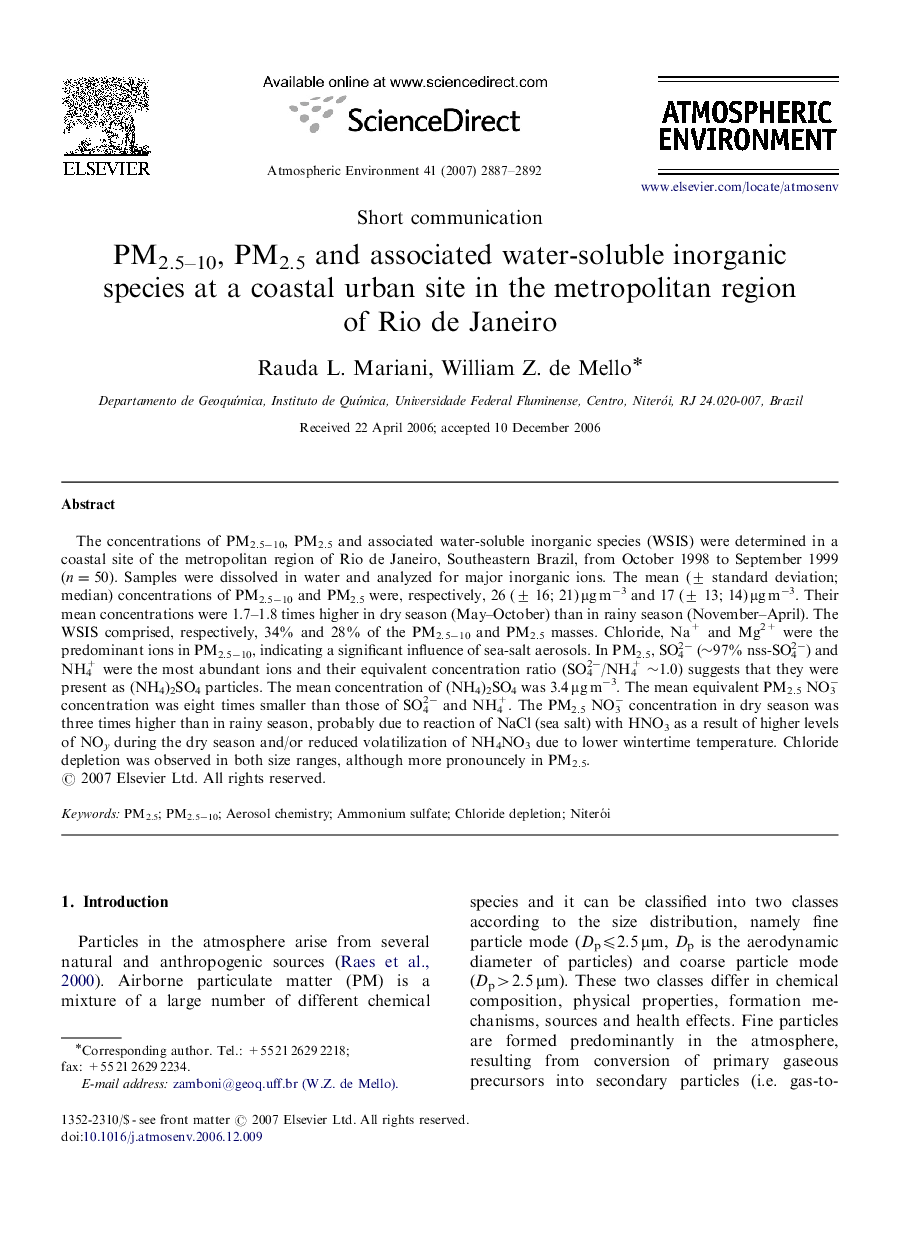| Article ID | Journal | Published Year | Pages | File Type |
|---|---|---|---|---|
| 4442951 | Atmospheric Environment | 2007 | 6 Pages |
The concentrations of PM2.5−10, PM2.5 and associated water-soluble inorganic species (WSIS) were determined in a coastal site of the metropolitan region of Rio de Janeiro, Southeastern Brazil, from October 1998 to September 1999 (n=50). Samples were dissolved in water and analyzed for major inorganic ions. The mean (± standard deviation; median) concentrations of PM2.5−10 and PM2.5 were, respectively, 26 (± 16; 21) μg m−3 and 17 (± 13; 14) μg m−3. Their mean concentrations were 1.7–1.8 times higher in dry season (May–October) than in rainy season (November–April). The WSIS comprised, respectively, 34% and 28% of the PM2.5−10 and PM2.5 masses. Chloride, Na+ and Mg2+ were the predominant ions in PM2.5−10, indicating a significant influence of sea-salt aerosols. In PM2.5, SO42− (∼97% nss-SO42−) and NH4+ were the most abundant ions and their equivalent concentration ratio (SO42−/NH4+ ∼1.0) suggests that they were present as (NH4)2SO4 particles. The mean concentration of (NH4)2SO4 was 3.4 μg m−3. The mean equivalent PM2.5 NO3− concentration was eight times smaller than those of SO42− and NH4+. The PM2.5 NO3− concentration in dry season was three times higher than in rainy season, probably due to reaction of NaCl (sea salt) with HNO3 as a result of higher levels of NOy during the dry season and/or reduced volatilization of NH4NO3 due to lower wintertime temperature. Chloride depletion was observed in both size ranges, although more pronouncely in PM2.5.
